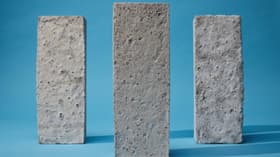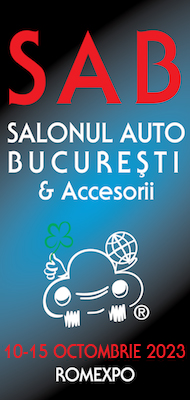Traditional concrete manufacturing processes result in a ton of CO2 for every ton of cement produced – and since we're talking about somewhere around 4.1 billion tons globally just in 2022 – more than half of that in China alone – cement is a massive contributor to climate change, being responsible for about 8% of global carbon emissions.
This makes it an equally massive opportunity; whoever gets to global scale first on a cost-competitive, totally zero-carbon cement alternative could well be sitting on a giant money-printing machine as decarbonization mandates and carbon taxes start to kick in.
There is no shortage of low-carbon and carbon-capturing concrete alternatives in the works, but MIT spinout Sublime Systems is particularly interesting, since it takes a novel electrochemical approach to cement-making that's "true zero carbon" instead of "net zero carbon" or "carbon-sequestering" – in that it can totally eliminate carbon emissions at both the key points where they typically arise in the process.
Sublime's zero – or ultra-low-carbon – cement production technology
In regular cement manufacturing, limestone is heated to around 1,400 °C (2,5,52 °F) by burning fossil fuels – the first major source of emissions – in order to produce pure lime. But limestone is about 50% carbon dioxide by weight, and when the furnace heat releases that CO2, it's hard to capture, since it's mixed in with the flue gases.
Sublime's approach is completely different, and based on electrolysis. Company co-founders Leah Ellis, Ph.D and Dr. Yet-Ming Chiang explain it in detail in a Medium post, but the bones of the process are as follows.
Water is split at near neutral pH, producing hydrogen and oxygen gases, but also a pH gradient between the two electrodes. A calcium-bearing mineral reacts with the acid formed at the anode to generate dissolved calcium ions, which then migrate toward the cathode. When they reach a pH of at least 12.5, they react with the base generated at the cathode to precipitate out as solid calcium hydroxide – also known as builder's lime, or slaked lime.
This lime is a drop-in replacement that feeds into traditional cement manufacturing from there. That's the basics; Sublime has developed it, say the founders, such that it's now more energy-efficient, it eliminates production of hydrogen, it separates the oxygen and CO2 gas streams, it can extract the lime continuously from the reactor, and it can be made using off-the-shelf electrolysis equipment.
The process is quite flexible, and it works with a variety of different feedstocks. Where low-grade limestone is all that's economically available, it can use that. This process can't avoid producing CO2 – but at least it comes out in a pure, cold state, pre-compressed to 10 bar and ready for easy capture and storage – and using substantially less energy and creating substantially lower emissions than regular cement production.
For true zero carbon cement, the process can draw pure calcium from impurities in silica, magnesium, iron or aluminum, for example, refining them into higher-grade materials in the process. Crucially, it all happens at room temperature, with no need for a combustion furnace or electric heating.
Sublime claims it's, "the only fossil-fuel-free, scalable, drop-in replacement for traditional cement in concrete."
Achieving a key certification goal
A few days ago, Sublime announced that its product has attained ASTM C1157 designation. This is an industry standard based purely on performance requirements, testing parameters like strength development, durability, shrinkage, water retention, air content, setting time, density, early stiffening and cracking, and it means Sublime Cement can now be used in compliance with major American and international building codes.
Oddly enough, although the C1157 standard was created more than 30 years ago in 1992, a lot of the industry still operates on previous standards developed in 1940 and 1967, which focus on some key performance requirements, but also demand the use of Portland cement, or other processes that require a 1,400 °C furnace.
Down to brass tacks: where is Sublime's operation at in 2023, when will it start getting "the world's cleanest cement" to market, how long will it take to scale to a size capable of truly making an impact on global carbon emissions, and what's the green premium going to be on pricing?
"Our long-term goal and our expectation is that eventually, once our process is scaled up and the technology is mature, in perhaps eight-10 years from now, we have a pathway to reach cost parity with traditional Portland cement making," says Sublime VP of R&D Dr. Jesse Benck, speaking on the Invisible Strength podcast. "Ultimately, to drive the widest-scale adoption possible, we need to reach cost parity with the current processes. We know the industry is very cost-sensitive, so to really make the biggest impact possible, that's what we're aiming for."
"In the short term," he continues, "we're a brand-new approach, and a new technology that's competing with Portland cement making that's more than 100 years old, and it's a huge, globally-scaled, technically mature industry. So the reality is, in the short term, the process is a little bit more expensive, but at least for our first first full-scale manufacturing facility, we anticipate that our cost will be less than the cost of Portland cement plus carbon capture."
To put that in context, cement currently costs around US$130 per metric ton, and a 2022 policy briefing from Harvard's Belfer Center prices carbon capture in cement production at anywhere between $19-$205 per ton of CO2. So without knowing which end of this scale Sublime is talking about, it seems the company's first clean cement product could sell at anywhere between 15-158% more than the shelf price of its dirty competitors.
As for scale and progress, well, Sublime started out as a gram-scale research lab model at MIT, but since the business was spun out, it's scaled up considerably.
"Our facility now can make on the order of 100 tons per year of cement," says Benck. "So we've already come a long way, many orders of magnitude larger than when we started."
"What we're working towards now,." he continues, "is a demonstration plant that will have a capacity of around roughly 25,000 tons per year. We're aiming to have that commissioned by the end of 2025, so we can start producing in 2026. Then after that, we're aiming for our first full-size, commercial-scale cement manufacturing facility, which will be around a million tons per year. The details are still being worked out, of course, but the timeline for that is around 2027-28. Beyond that, we hope to deploy globally in the 2030s. We think we've got a clear path to reaching the global scale that's necessary to have a massive impact."
"We can't go cold turkey on cement," says co-founder Leah Ellis in a presentation at the TEDx Boston event last year. "It's just such an important material ... There are solutions, and people in the industry know about them. In the past 20 years, the carbon footprint of concrete in the US has gone down by 20%, which is very impressive, and globally, the multinational corporations that produce cement have all made net zero commitments for 2050 ... But it's not enough."
"There really has to be a concerted effort to address this problem," she continues. "Collaboration between building owners, with architects, with structural engineers and with materials suppliers to bring new products to market, and to ask for low-carbon cement. Without capital, and without policy, and without consumer demand, this problem will continue to fly under the radar."
Source: Sublime Systems


























